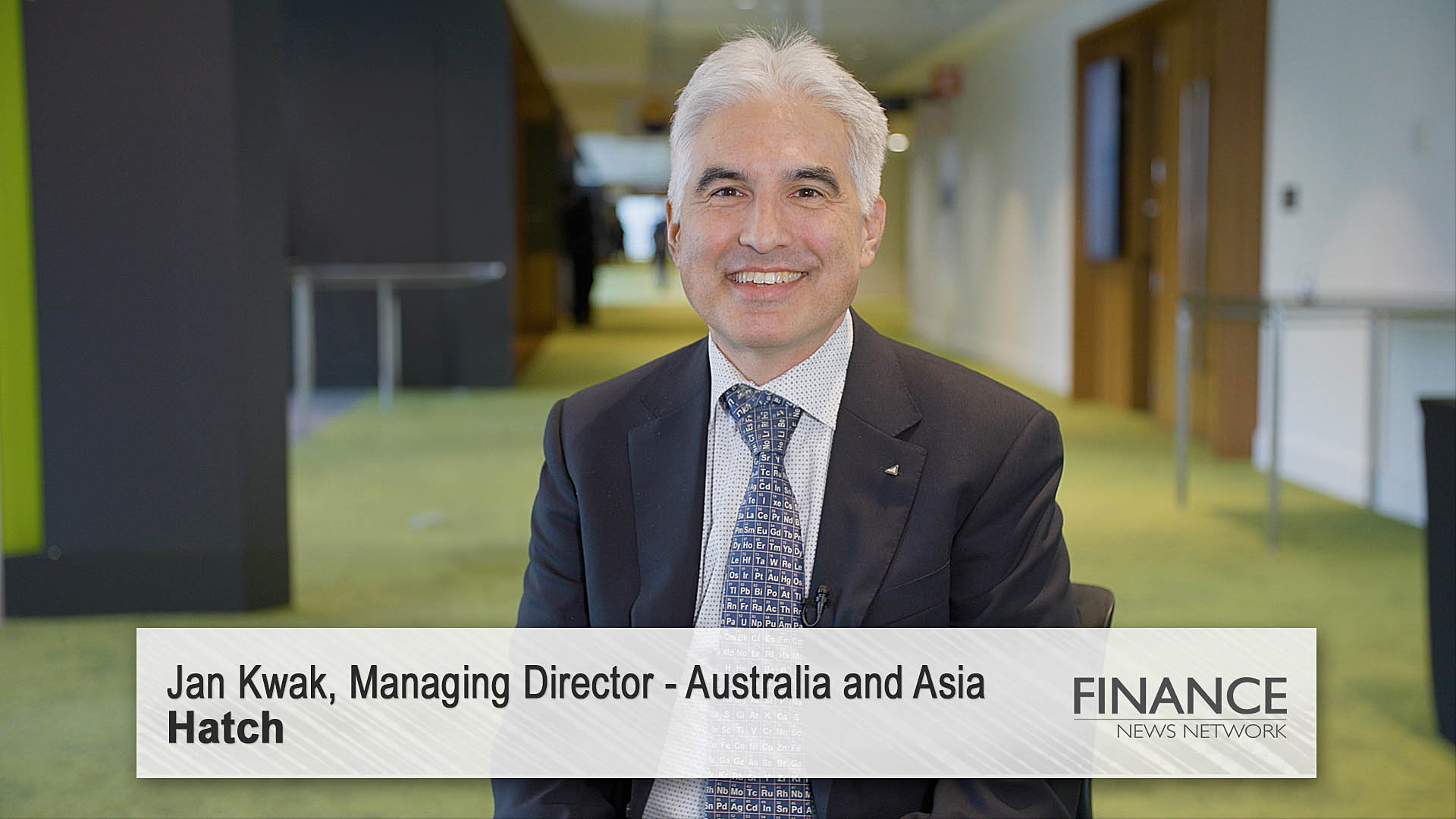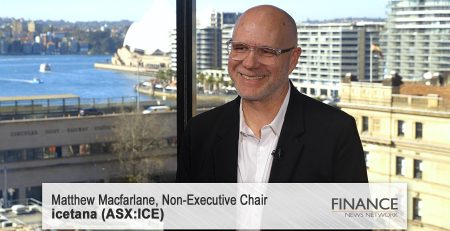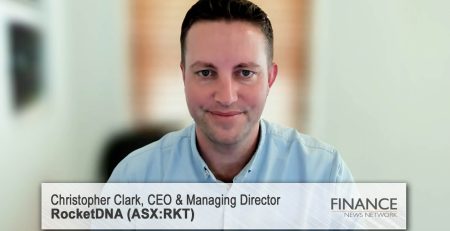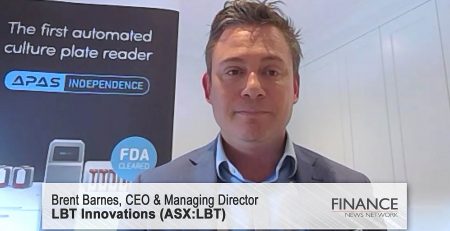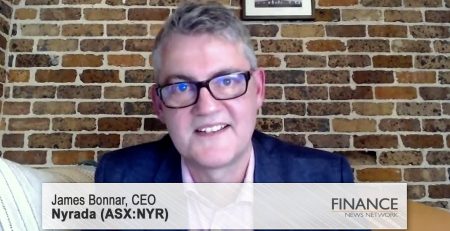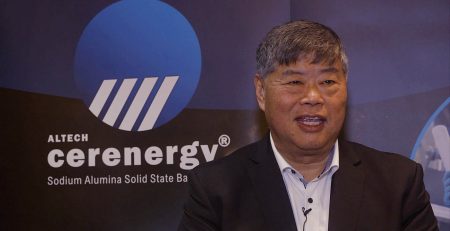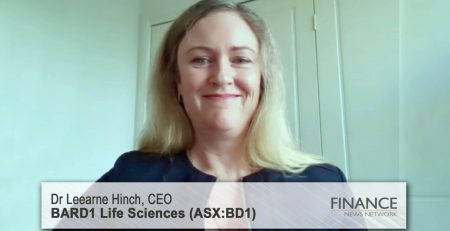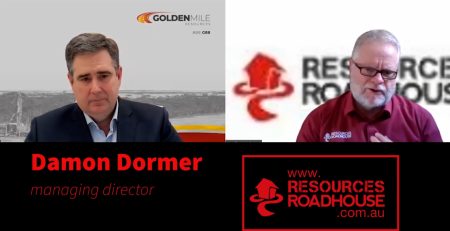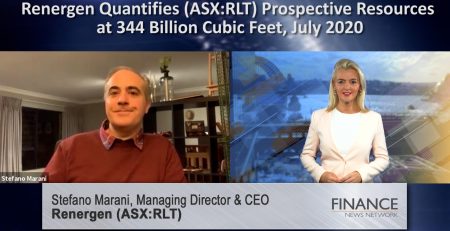Global consultancy Hatch discusses commodities
Hatch Managing Director of Australia and Asia Jan Kwak discusses key commodities, geographical opportunities, innovation, applying the circular economic model to mining, and the process of producing feasibility studies.
Paul Sanger: I'm Paul Sanger for the Finance News Network, and I'm at the IMARC Conference today and I'm talking with Hatch MD Jan Kwak. For those who are not familiar with Hatch, they are a global engineering, project management and professional services firm. Welcome, Jan.
Jan Kwak: Thank you.
Paul Sanger: It's great to have you here. I've got a lot of questions to ask you today, Jan. Let's kick off. Hatch is clearly a large and diversified business. Where do you see the greatest opportunities from a commodities perspective going forward?
Jan Kwak: Yeah. Well, look, the starting point in the mining sector for sure has to be things involved in the energy transition, right, in battery materials and electrically conductive materials, stuff like that, of course. The challenge though, the challenge is broader than that. So, I can name the elements, yeah, and I can look at all the critical minerals charts, yep, but the problems we have to figure out, probably through technology and smart industry, is number one, we don't have that much resource in the world identified. We know that. Right? Reserves are not as much as the world needs of those things.
Number two, we can't process those metals the way we always have. If we apply the same technology that we've been using for 100 years to get those metals now, we're going to create even more pollution. So, we need new processes, new technologies to do that.
And the third issue is that we don't really know what we're transitioning to. Some people talk hydrogen, some people talk solar, wind, all these things. They all have a niche. But we're still in that, as an industry, in that stage of figuring out which energy solution makes sense for what. So, really, which metal and which particular component is going to become important is actually not as clear as it seems.
So, where's the opportunity? The opportunity is in exploring those niche opportunities for where what kind of energy source and what kind of metal makes sense for what specific case. You know, people talk hydrogen. Why is hydrogen important? Well, from our studies, hydrogen makes sense not everywhere, not a silver bullet universal solution. It makes sense certainly as a chemical. If you want it for its chemical properties, fantastic. If you want it for a fuel, unlikely to be economic.
Paul Sanger: Exactly.
Jan Kwak: Right? So you have to find the right cases where hydrogen makes sense.
Paul Sanger: And, Jan, it sounds like lithium has been keeping Hatch busy. With the recent fall in lithium prices and the increasing capital costs this year, has the interest started to fall away in the lithium space?
Jan Kwak: No, that's a short-term thing. I'm really not too worried about that. Lithium is going to continue to grow and continue to be important. Who has the right crystal ball? Most likely alternatives will emerge and we'll realise that lithium is most valuable in transportation-type energy storage, and we'll stop using lithium so much and we'll turn to cheaper things where weight doesn't matter in stationary batteries, but there's still lots of need for lithium in the economy before… Number one, recycling makes sense. I think I've seen recent studies that we need another 15 years of new lithium, nickel, cobalt coming into the market before there's a significant-enough recycle stream to start being self-sufficient. So, that'll be a while. So yeah, look, short-term market dynamics, they'll go up and down a little bit. We're quite confident that lithium will continue to be important in the economy for a while. What people will pay for it is a different question.
Paul Sanger: We'd love to know the answer to that one. And where do you see the greatest opportunities from a geographical perspective?
Jan Kwak: Yeah, geography. Interesting one. What we see is more and more the mining industry, and especially the secondary and downstream processing, happening closer to renewable energy sources. That's what matters. The mine is where the mine is, so you'll go to where that resource is and you'll make it as transportable as possible as early as possible, and get it very close to renewable power to get that zero-carbon footprint. So, lots of geographies make sense, but the ones where renewable power is abundant and available are important.
So what does that do? That rules out places that are high volcanic, very cloudy, maybe, far away from terrain that maybe gives you the option for hydro, etc. And it kind of changes the map of where you do processing to places that previously may not have made sense, like Australia, with abundant solar power in this case, or places with abundant hydro that have done that before. A little bit like, in decades gone by, a lot of aluminum smelting was done close to hydro dams. Today, well, that'll happen with green steel and with green nickel and green copper, etc. So, that's the macro geography part.
The other important thing about geography is I can see a bigger need for industrial clusters. So, that's co-location of various industries close to one or two producers. And that's because over… I'm not talking over years, but over say a decade, as we switch to a circular-type economy, we'll be in a position where waste won't be tolerated anymore and tailings won't be tolerated. So, we'll need to be close to other industrial partners that would have a use for all those components in the ore. You can't just extract the 1 per cent and throw the other 99 per cent away. You have to try and let's say use half of it, at least, and one day 90 per cent, and maybe one day 100 per cent.
So, that means you'll need a need for sand. You'll need people that maybe want a certain mineral in the thing. And almost every tailings is full of silica, iron, aluminum. It'd be really nice to co-locate with people that need those things.
So, there's also a very local geography that's important. It's like an extension of the renewable energy zone where you need suppliers of energy, users of energy, storage of energy, and you need the right industry that can capitalise on that and operate synergistically. So, geography's becoming a very important question.
Paul Sanger: And can I ask about Africa, in particular? What sort of activity are you seeing there, and do you expect activity levels to pick up further, particularly following China's announced curb on graphite exports?
Jan Kwak: Yeah, good one. So, Africa continues to be a challenging place to operate, but it's mineral-rich, so people will keep trying. Especially recently, the geopolitics and what's been happening in French Africa, the Russian, the Chinese, the American now influence there is making it still difficult, but it has to continue. If the world cares about modernising and creating a fairer playing field for everybody, we have to be there and do it in a sustainable way.
The graphite part specifically, yeah, this announcement by China that they're going to stop exporting graphite, we're hearing it right now. Even insiders didn't really see this coming. In retrospect, maybe not a surprise, but it's happened. We have been working with and talking to graphite producers, synthetic and natural, all over the world. And all of those people will now be looking, "Oh, there's an opportunity." So, here in Australia, there's many. In Canada, there's many. Africa, I'm not personally close to, but the same thing will be happening. Anyone with a good graphite deposit or a technology to make synthetic graphite will suddenly have a market opportunity now that wasn't there before. So, that's an exciting time.
Paul Sanger: So it's fair to say that your telephone's ringing pretty hot at the moment. The graphite people are…
Jan Kwak: Yeah, the graphic people. The graphite people.
Paul Sanger: Let's talk about innovation. How important is innovation, and how does Hatch maintain its competitive advantage in this area?
Jan Kwak: So, first of all, these challenges we have in our industry, we can't keep doing things the way we always have. We have to do things in a circular way. We have to recycle. We're all about technology and innovation. So, it's critical in the industry, and it's critical that these things get talked about. Society expects that of us. We have to be a responsible industry, and they look to us to figure out how to do this right. So, it has to happen.
And then at a company level, how do we do it? Yeah, there's lots of ways you do it, but you have to keep your eyes on, what are the challenges that industry is posing to us? And then we have to try and assemble all the different kinds of people that would put a good lens on that. So, at the very lowest level, it comes down to having an inclusive workplace and having a diversity of thought and having multiple people. There's no single-department problems anymore. There is all these different points of view that come in to solve these mega challenges. So, you have to reconstruct an engineering company, a mining company, a technology company to be able to address challenges in a different way than we have before.
And another thing we have to think about in innovation is open collaborative innovation is fastest and cheapest. Gone are the days when you have a secret department in the back woods that studies stuff and doesn't talk about it. That's too slow and too expensive. So, the kind of things that happen at conferences like this and other ones where like-minded people are brainstorming constantly are invaluable ways for the industry to progress. And I think all technology companies need to be a part of that story. They can't innovate alone. They have to innovate in groups and in clusters. And I find it fascinating that Europeans started it, and now in North America and Australia, these people are trying to nurture technical clusters to accelerate innovation, and it's fantastic. It's an exciting time, actually.
Paul Sanger: And you touched on this earlier, how does Hatch think about sustainability, and how does it deliver the best outcomes on this?
Jan Kwak: Let's start again with that circular model. That's really, really important. The principles of circular are no waste, recycle as much as possible, or reuse, and regenerate nature, right? So, in the way we design mines, plants, industries, we'll be thinking about that. We will encourage, you know, scoping of a project such that… We're thinking very carefully about all these horizontal topics that need to be addressed for the plant or the mine, but also across the industry. So, where's the energy coming from, and how can that be done with minimum waste and maximum reuse and storage? Where's the water coming from? You know? It has to be that water is used by the community, by the industry, and by the agricultural and by all the stakeholders in the region. Where is the food coming from? How was the land used? Right? And then, in the middle of that, how is social capital generated? Because what you want ideally is you want to set up your mining business or your mining community in such a way that the community has ability to generate business that's adjacent to but not dependent on the mine. That's the best configuration you can have. So, when we think about sustainability, there's the environmental angle, yes, but also vitally important is the community angle, which is that the community has a way to generate capital. And, of course, financial. And often that's about smart design and smart technology that gets you the lowest financial costs as well.
Paul Sanger: And can you give us an idea of what kind of work's going into producing a PFS or a DFS? On average, how long does it take to complete a project like this?
Jan Kwak: Good question. Good question. So, there's multiple paths, but look, the basic path is… and let's go through the steps together. The first one is a scoping study. And a scoping study, the way we think about it, its only purpose is to identify, is there a business case possible? Is there just one configuration? It may not be optimal, but is there one case where this is going to be a viable project? That's the scoping study. That's the only result out of that. Yes, there's something here.
Paul Sanger: Tick.
Jan Kwak: Tick. That is typically, generically, three months, six months sometimes, depending on complexity. You're not even looking for showstoppers yet. You're just looking for, through all that, is there blue sky anywhere?
Second thing is a PFS. So, a PFS, six months, a year, depending on if test work's required. The purpose of that phase is to deal with optionality. So, now I've got a single option that might make sense. What are all the other options? And select the best option. That usually involves a degree of data gathering, a degree of test work, a degree of proving a resource, these things. And at the end of that, you are fairly confident that, of all the options possible, you've kind of selected, for a whole bunch of reasons, your best option.
The third step then is a bankable feasibility study. Now, the difference between a bankable feasibility study and the PFS, at a PFS you're generally doing your cost estimating in a kind of factored scaling method. A feasibility study, you're now doing bottoms-up costing. That's the biggest thing. So, you're doing enough design, development of the design, that you can name every nut and bolt in the thing and you build what's called a bottoms-up cost estimate. That can take up to a year to get right. At the end of that, you are ready to start buying equipment, letting contracts going. So, it's probably the last study you do before you decide, "Yes, I'm going to pull the trigger and build this." And then construction starts.
Those are expensive exercises, and that's why it's so important to make sure your scoping and your PFS was done properly and well thought through rigorously before you spend a lot of money on an FS. Once you have an FS, pretty much you should be within 10 per cent of your numbers, right?
So, those three phases together, you're already talking one to two years, depending on the complexity and how much new technology you have. And then you can build it. And a typical build time is two or three years, depending on lots of stuff.
Now, I say that, but there's short circuits through that. We've done projects where time to market's important. And you can do that. You can take more risk, you can skip steps, you just have to have a backup plan. You know, we've been thinking deeply about this, because there are some projects in critical minerals, in rare earths, where we can't wait five years, 10 years to do these things.
Paul Sanger: Well, graphite would be a classic example there.
Jan Kwak: Classic example.
Paul Sanger: News two weeks ago suddenly is, where can we get graphite from?
Jan Kwak: We need this quickly. We need this quickly. That's right. That's right. So, it's quite reasonable to, in allowing for a larger contingency, to go ahead and say, "Right, I'm going to go faster. I'm going to go straight to partnering, alliancing, lock in vendors, lock in constructors." We usually avoid skipping test work. That tends to be in the fatal flaw category. But the other bits, you can do a hell of a lot faster, at the expense of risk, admittedly. But we've done that with a couple of clients, and it pays off when time to market is the vital one. That missing a market window is more expensive than say 20, 30 per cent, then you just do it and you keep going.
Paul Sanger: It's like measured risk. Sometimes it's worth taking that measured risk to get the job done.
Jan Kwak: And that's quite okay. Society needs things. Society needs the materials, and it's our job to figure out how to do that as efficiently as possible in the circumstances.
Paul Sanger: Absolutely. And look, to close things off, employee retention and recruitment is critical in your business. And I'm not sure you have the perfect answer, but how do you deal with this critical issue?
Jan Kwak: Look, that is not easy, and everybody is grappling with that. And, in a way, you have to decide who you are and what you want to be. So, we've decided we're a purpose-driven organisation. We really want to change and have a positive impact on the mining industry. So, just having that in place, you have a hook, that some people are attracted to that. And feeling like you belong to an organisation that is trying to do things you believe in is a retention policy and it's good for business. So, that's our starting point. We recognise that not everyone's interested in our mission, but the people that are attracted to our mission will stay with us. And we do have a very high percentage of lifetime employees, like myself. I've been at Hatch my entire career, 30 years now.
Paul Sanger: Fantastic.
Jan Kwak: So, that works well. Another important one is keeping lots of opportunities available to people. So, we run a very flat organisation where it's easy to move around and have seven careers in the same company. You make it that as soon as people are getting bored with their job, that it's easy to jump to the next job and do something else, learn something different.
Paul Sanger: Give them another opportunity. Yeah, absolutely.
Jan Kwak: A new opportunity. Those are probably the big levers that we use, beyond the stuff that I see that many people are trying. It gets from gimmicky, you know, putting ping pong tables… which is fine if that works, no problem.
Paul Sanger: Whatever it takes.
Jan Kwak: Whatever it takes. To trying and getting at people's hearts, which is, "I'm making a difference in the world."
Paul Sanger: Jan Kwak, it's been absolutely fascinating talking to you today. Many thanks for your insights and taking the time to speak with us.
Jan Kwak: My pleasure.
Paul Sanger: Thank you.
Ends
Copyright 2023 – Finance News Network
Source: Finance News Network

